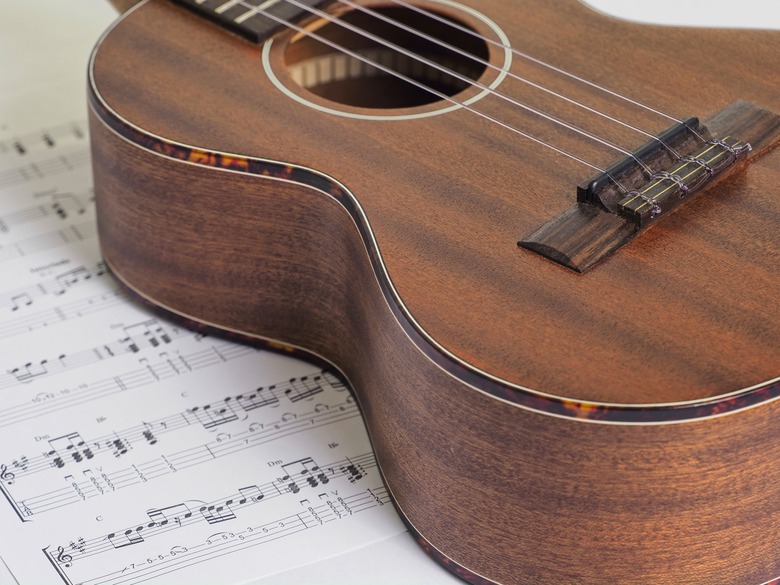How To Identify Mahogany Wood
We may receive a commission on purchases made from links.
Mahogany is revered for its deep and luxurious coloration, its workability, rot resistance, and more, but there's a problem. Many of the true mahogany forests have been depleted, and supplies aren't as abundant as they once were. That opens the door for imitations to flood the market, and while many of these are good wood, they aren't mahogany.
If you know and appreciate the qualities of true mahogany, you shouldn't have much trouble distinguishing it from an imitator like Philippine mahogany (lauan) or Santos mahogany. These types of "mahogany" wood and others like them aren't even the same species as mahogany, and sometimes the differences are obvious, but depending on use, the differences may not matter. If you're about to purchase antique mahogany furniture, though, or you want to make a dresser yourself out of mahogany, then you want the real thing.
What's So Good About Mahogany?
What's So Good About Mahogany?
If you're only concerned about outward appearances, you can find a number of species that superficially resemble mahogany, but if you work with wood, you'll have a better appreciation of the qualities that make it so sought after and so costly.
- Workability: For a reasonably dense hardwood, mahogany is surprisingly workable. It's easy to cut and to sand, and the results are almost always first-class.
- Defect-free boards: Mahogany trees grow tall and wide, so it's easy to get clear-grain boards without knots, sap veins, or other defects.
- Stability: Mahogany has excellent dimensional stability. It exhibits minimal response to changing temperature and humidity and resists warping, so the pieces you join together stay together.
- Rot resistance: While not as resistant to rot and pests as some other types of hardwood like teak, mahogany scores highly in this department.
In purely aesthetic terms, mahogany is prized for its grain and coloration. The mahogany wood grain pattern is straight with pores that may be small but are nonetheless visible to the naked eye. The reddish and pink hues darken over time to a luxurious reddish brown.
True Mahogany Comes From the Americas
True Mahogany Comes From the Americas
What is generally considered to be genuine mahogany comes from trees of the species Swietenia. Cuban mahogany (Swietenia mahogani), which is the original mahogany, has been off the market since 1946 because of overharvesting. Honduran mahogany (Swietenia macrophylla) (also known as American, Brazilian, or Big-Leaf mahogany) is typically grown on plantations. A third species, Mexican mahogany (Swietenia humilis), is also a true mahogany, but it comes from smaller trees that produce smaller lumber with knots and other defects.
The trees that produce African mahogany, which is often sold as true mahogany, belong to a different genus: Khaya. The wood from these trees is close enough to true mahogany to make distinguishing them difficult. The two display only minor variations in texture and grain structure, and the workability, coloration, and stability are similar. The trees grow large, so the lumber is typically free of defects.
Some other types of hardwood that are often characterized as mahogany include Sipo (sometimes called Sipo mahogany) and Sapele. They are very stable and workable and they come from large trees that produce defect-free lumber, although they tend to be harder and darker than mahogany, Other species, notably Philippine mahogany and Santos mahogany, are so dissimilar to true mahogany in stability, weight, and rot resistance that they can't really be considered mahogany at all.
Shopping for Mahogany
Shopping for Mahogany
If you're looking for mahogany lumber, the first clue that a particular board is true mahogany or another species is its country of origin. If it comes from Africa instead of Central or South America, it might not matter, because wood that originates in Africa bears a close enough resemblance to check most of the boxes in the qualities you're looking for. It will work as easily and have the same coloration when finished. Beware of mahogany from the Far East, though, because it's more likely to differ significantly from actual mahogany.
Shopping for mahogany veneered furniture or plywood is a different matter. Plywood veneers are often lauan, which isn't really mahogany and won't have the same color when finished. This type of plywood is often used to make budget furniture and wood paneling. You can stain lauan to look like mahogany, but it won't ever look like the real thing. Real mahogany has an unmistakable deep reddish-brown coloration.
Mahogany flooring is another product that probably isn't mahogany. Most of it is Santos mahogany, which bears a passing resemblance to mahogany, but is harder and heavier. However, it does have a charm of its own, and its extra durability can be good thing when it comes to a surface that takes as much abuse as a floor.
